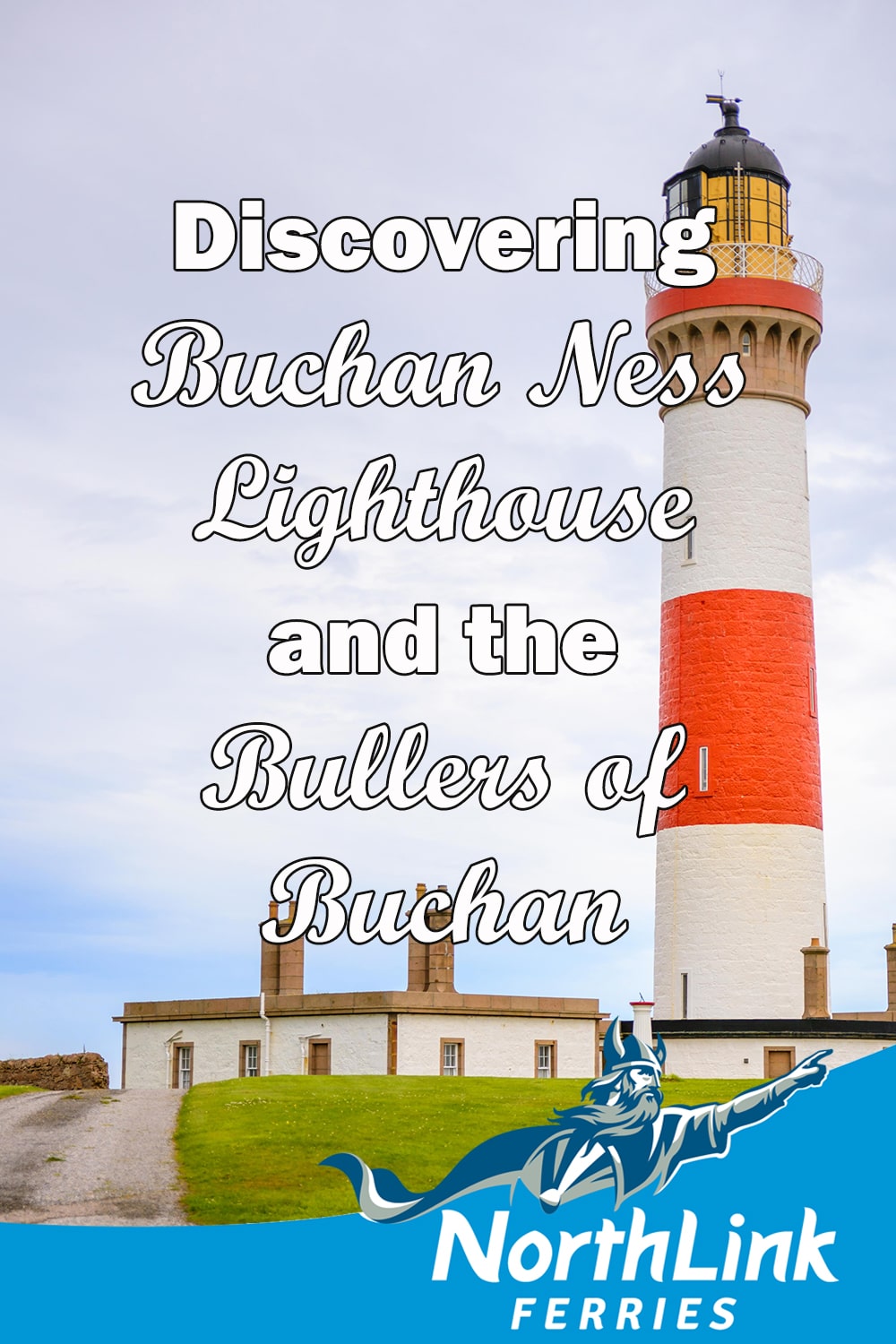Discovering Buchan Ness Lighthouse and the Bullers of Buchan
The village of Boddam is a lovely seaside community, tucked away amidst the breathtakingly beautiful Buchan coastline. With a population of over 1,500 people, Boddam is a short commute to the nearby town of Peterhead and the city of Aberdeen.
Interestingly, Buchan Ness was the first lighthouse in Scotland to feature a flashing light and it also had a faster rotation than any other at the time.
Boddam is also home to the striking Buchan Ness Lighthouse which has stood imposingly on a small rocky headland and tidal island for 200 years. Before its construction, the absence of a lighthouse in combination with the area’s occasionally unforgiving seas sent countless ships crashing into cliffs and running aground. Therefore in 1819, following requests from the Magistrates, Town Councils and Harbour Trustees of Peterhead, it was agreed that a lighthouse should be constructed on Buchan Ness or another appropriate section of the coast to guide and warn sailors of the dangers ahead.
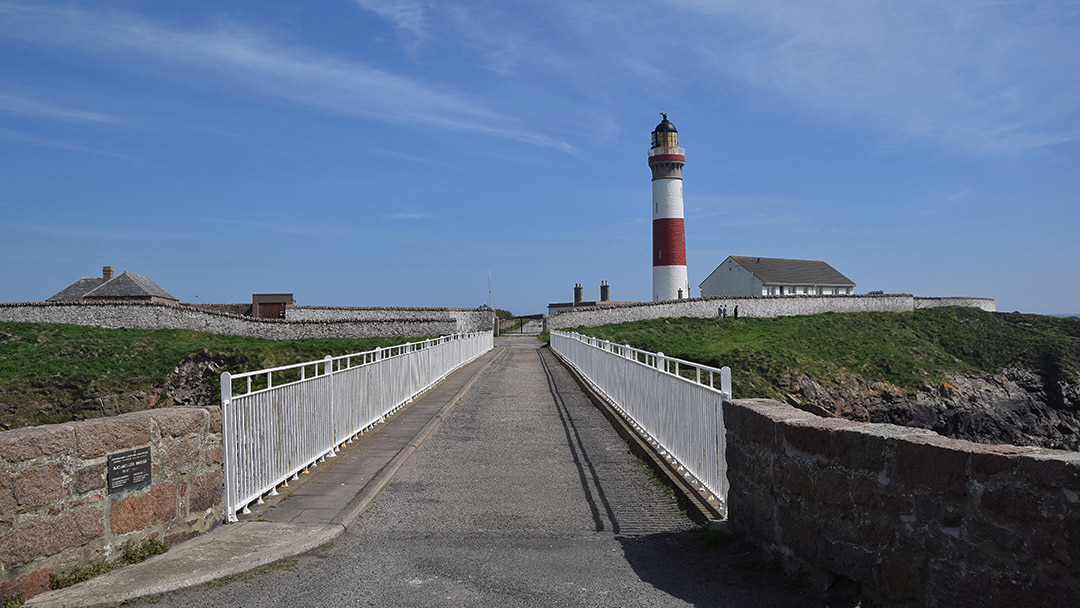
The Construction of the Lighthouse
Robert Stevenson, the grandfather of renowned lighthouse engineer Robert Louis Stevenson, was tasked with surveying the area and after careful consideration, he decided that the lighthouse would be most effective near the village of Boddam. Eight years later, in 1827, the lighthouse’s construction was completed by John Gibb, an Aberdeen contractor, using sizable blocks of granite mined from a local quarry.
Buchan Ness Lighthouse reaches an impressive height of 115-feet and has 166 steps leading to the top of the tower. Interestingly, Buchan Ness was the first lighthouse in Scotland to feature a flashing light, which had a faster rotation than any other at the time. Its present light flashes every five seconds, emitting a bright white light that can be observed from up to 28 nautical miles away.
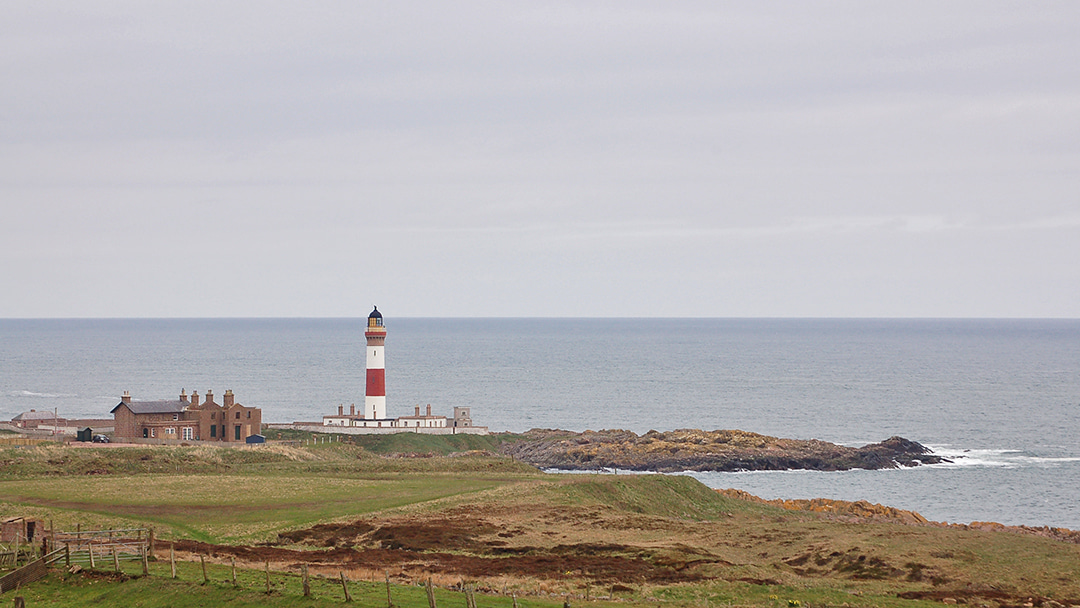
Since its construction, Buchan Ness Lighthouse has undergone several modifications. To help seafarers recognise the lighthouse during the day, a distinctive red band was painted on the tower in 1907. The lighthouse updated to a dioptric light system three years later in 1910, significantly increasing the lantern’s output from 6,500 to 786,000 candlepower.
In 1978, the lighthouse switched to electric operation. Finally in 1988, over 160 years after its construction, Buchan Ness became fully automated and is now remotely monitored by the Northern Lighthouse Board.
Like many other unfortunate Scottish lighthouses, Buchan Ness sustained damage during the Second World War. In this case, a drifting mine exploded 50 yards south of the lighthouse after washing ashore. Thankfully, no one was injured in the explosion – however the lighthouse itself wasn’t so lucky, and sustained some minor damage.
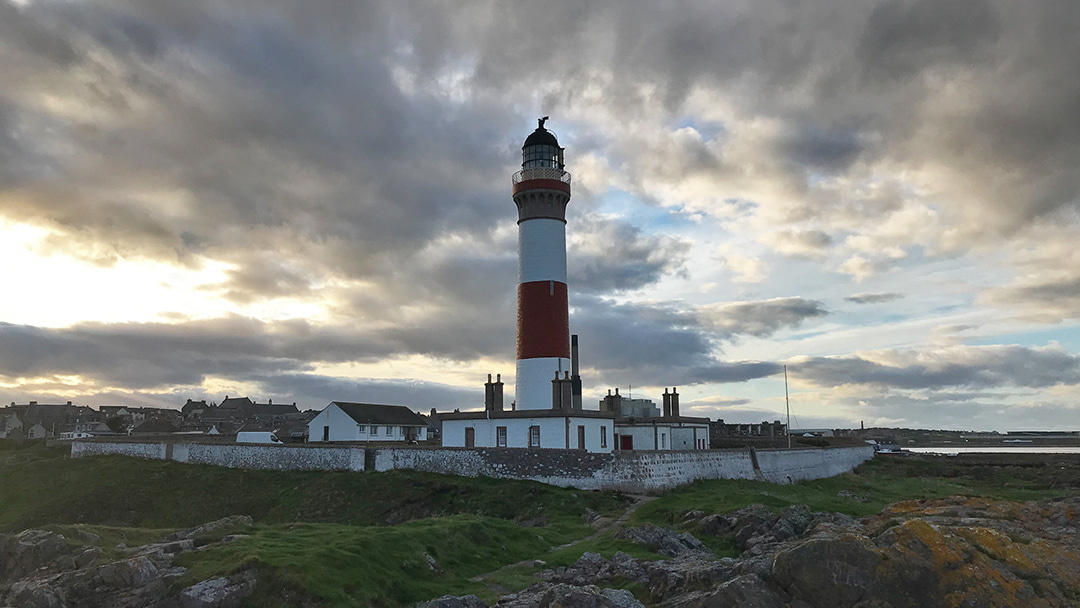
The Lighthouse Keepers of Buchan Ness
Nestled at the base of Buchan Ness Lighthouse are two Lighthouse Keepers’ cottages – the residence of the Lighthouse Keepers that once worked here. It was a demanding role, Lighthouse Keepers worked through the night to ensure the light flashed appropriately and took care of other responsibilities during the day. After the lighthouse became automated in 1988, Lighthouse Keepers were no longer necessary, and the lighthouse’s cottages soon fell into poor condition.
However, a small family-run business has since taken over the property, offering visitors the chance to stay in one of two beautifully renovated guest houses. Although there is no public access inside the lighthouse tower, you are still free to wander around the perimeter and take in the wonderful seascapes.
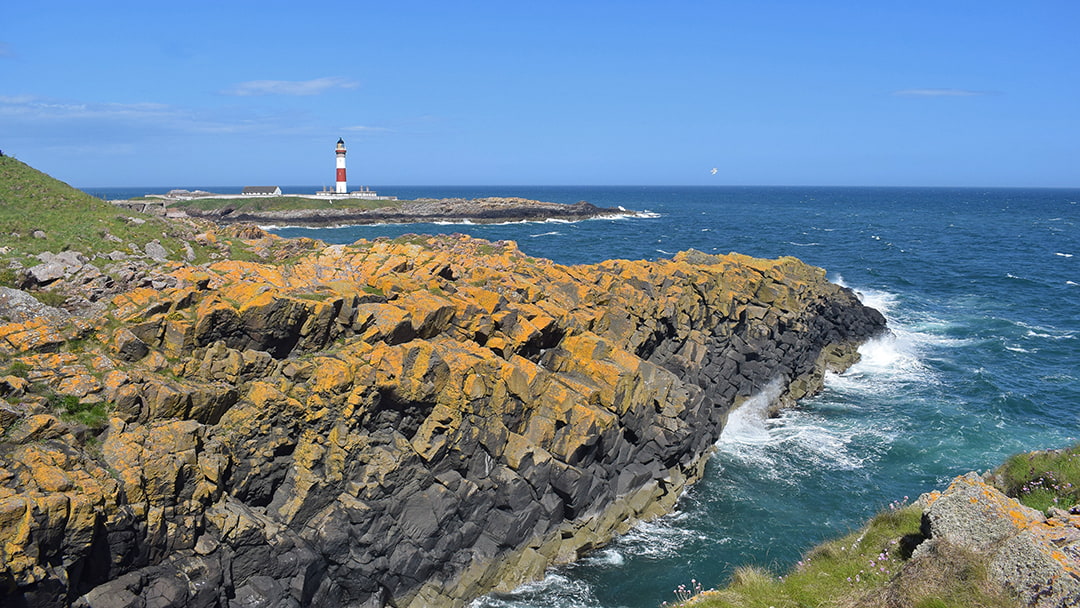
Surrounded by Beautiful Landscapes
The area surrounding Buchan Ness Lighthouse is simply a stunning backdrop of natural beauty. The Boddam cliffs exhibit a rugged and rocky terrain and although not particularly tall, with an average height of around 200 feet, these cliffs are exceedingly steep. Many seabirds use them as a haven, and seals are regularly seen swimming gracefully in the nearby waters.
Less than a 10-minute drive south from Buchan Ness Lighthouse is one of the most spectacular sights found along the Aberdeenshire coastline. The Bullers of Buchan is a 30-meter-deep collapsed sea cave amidst a sequence of awe-inspiring headlands, sea stacks and inlets.
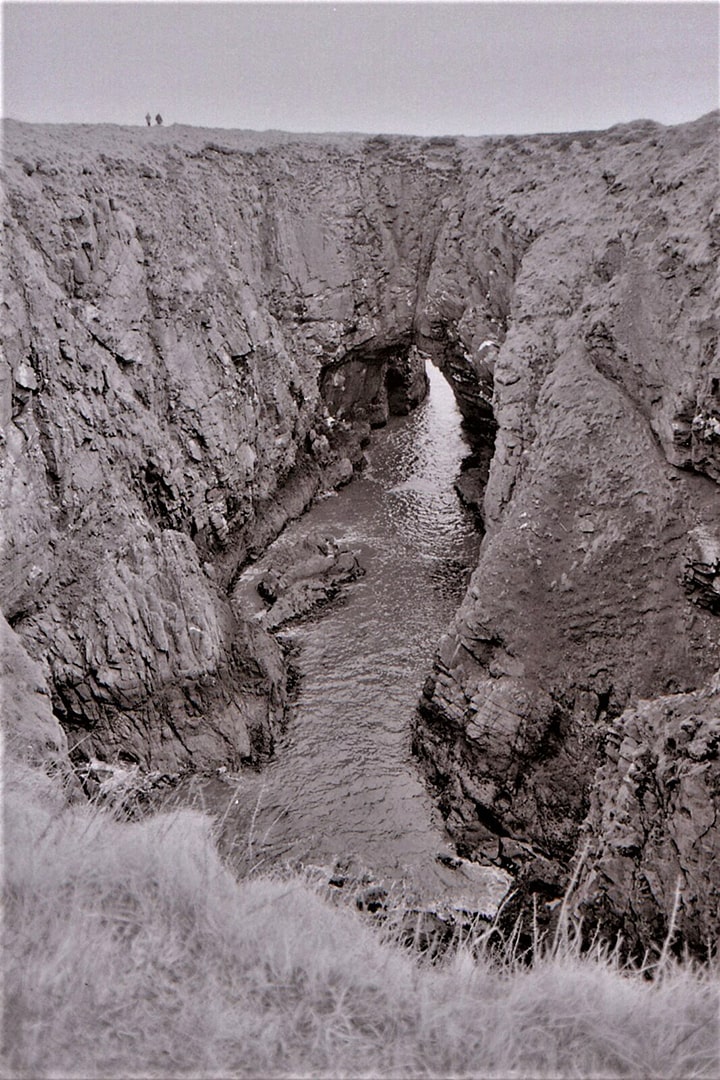
It is unclear where the Bullers of Buchan, also known as ‘the pot’, got its name from. Some speculate that it could be Old Scottish for ‘rushing water’, alluding to the distinct sound of waves crashing through the impressive natural archway, while others believe it could be a derivative of the French verb ‘bouillir’, meaning ‘to boil’, referring to the turbulent waters in the chasm during stormy weather.
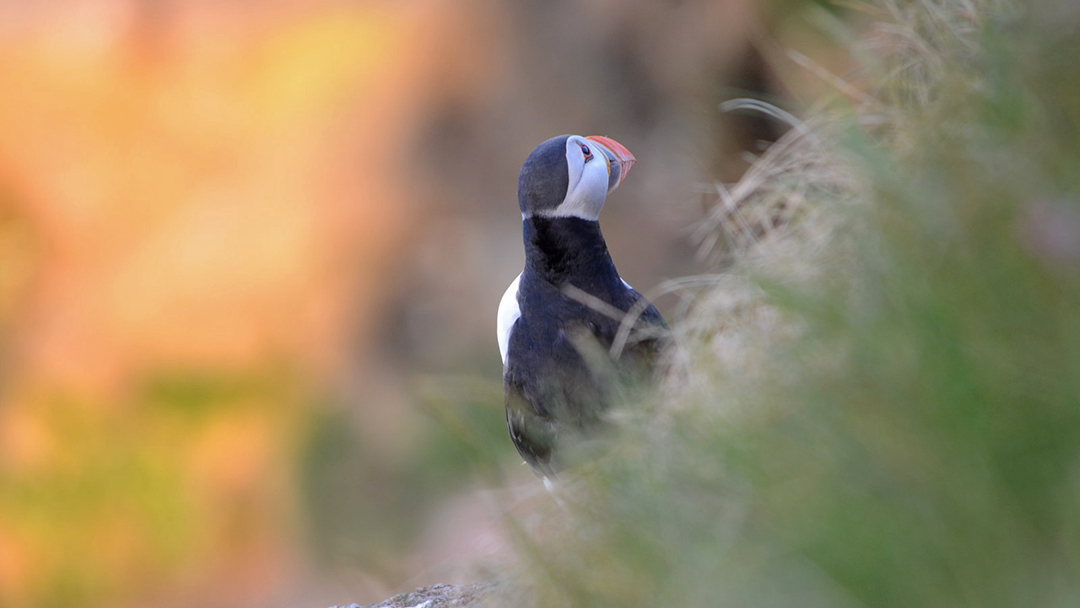
Moreover, the Bullers of Buchan is not just a geological marvel; it is also an important site for seabird colonies, who nest here in the ridges of the cliffs. The sound of bird calls and sight of soaring birds will accompany you on your journey, making it a haven for wildlife enthusiasts. A variety of seabirds can be spotted here during peak season such as guillemots, razorbills, puffins, fulmars and kittiwakes, whilst marine life including grey seals and dolphins can occasionally be seen in the sea below.
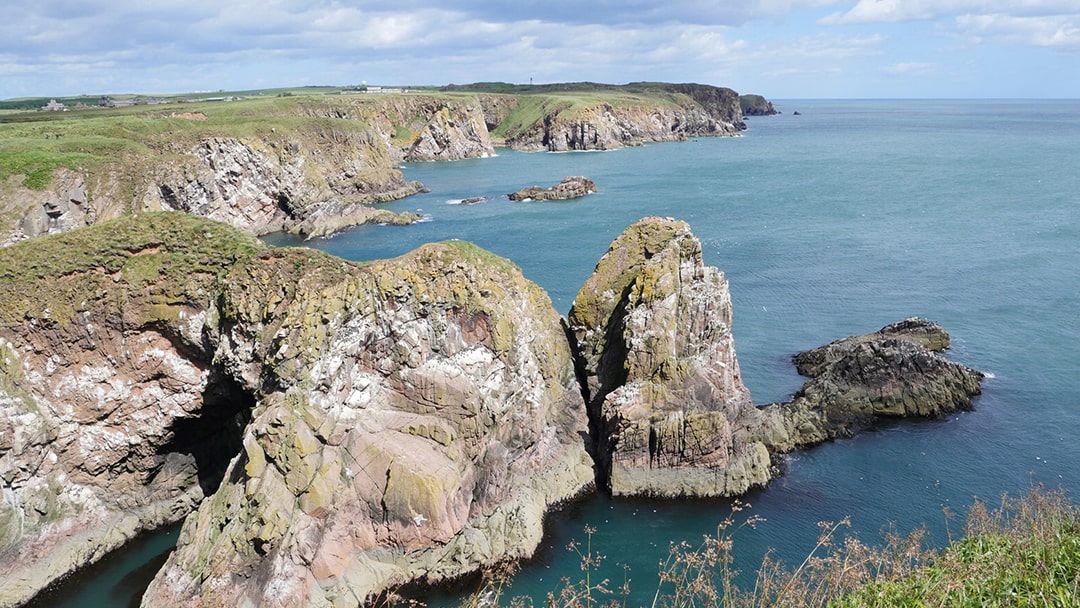
It is worth noting that there is a free car park located just a short walk from the Bullers of Buchan, however there are no other visitor facilities available. Additionally, the cliffs here are quite high and the paths can be narrow and uneven in places. Please use caution and don’t get too near to the cliff edges – especially on a blustery day.
For those with an interest in geology, birdwatching or simply looking for an easy hike to enjoy some fresh air, the Bullers of Buchan offers a truly unforgettable experience for visitors.
 By Amy Leith
By Amy LeithA recent university graduate with an admiration for Orkney and Shetland, loves to travel and visit new places, enjoys cooking, always listening to music, spends a little too much time on TikTok.
Pin it!
